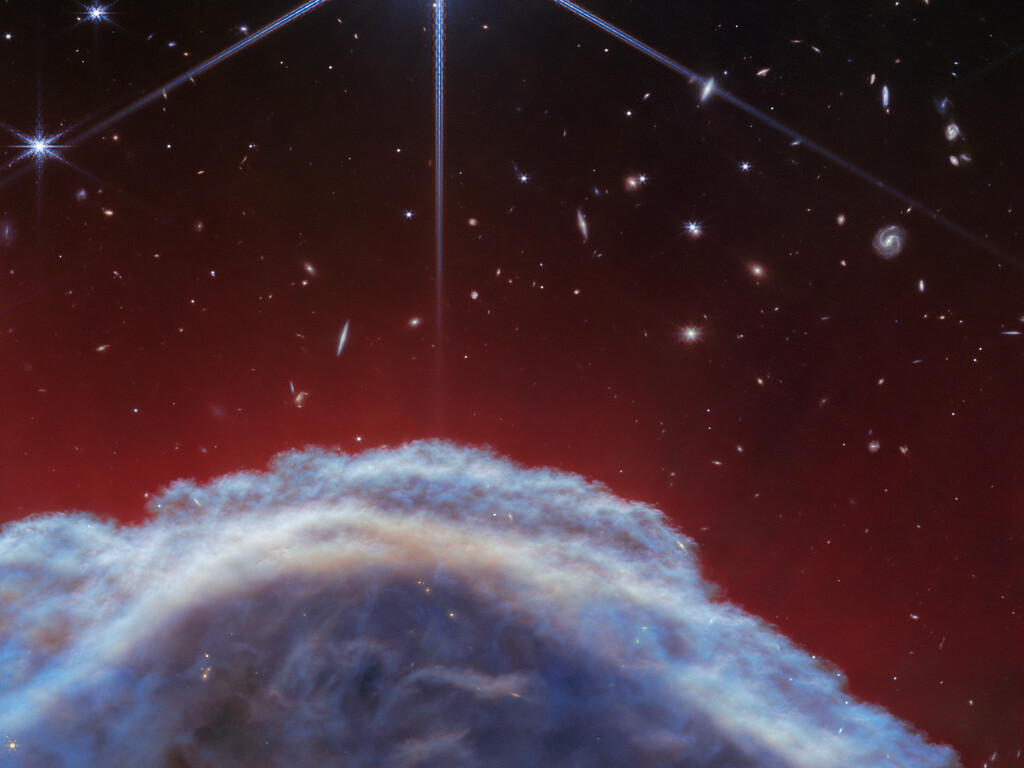Webb captures sharpest ever infrared images of Horsehead Nebula

This latest image from the NASA/ESA/CSA James Webb Space Telescope shows a part of the Horsehead Nebula in unprecedented detail, making it the sharpest-ever image of the iconic nebula.
The Horsehead Nebula, also known as Barnard 33, lies roughly 1300 light-years away in the constellation Orion (The Hunter). The nebula formed from a collapsing interstellar cloud of material, and is illuminated by a nearby hot star. The gas clouds surrounding the Horsehead have already dissipated and the Horsehead is estimated to have about five million years remaining before it disintegrates completely.
The Horsehead Nebula is a well-known photodissociation region (PDR). PDRs are areas where young, massive stars emit ultraviolet light, creating a warm region of gas and dust that is mostly neutral. This area lies between the fully ionized gas surrounding the massive stars and the clouds in which they are formed. The UV radiation from these stars significantly impacts the gas chemistry of the region and serves as the primary source of heat.
The light emitted from such PDRs provides a unique tool for studying the physical and chemical processes responsible for the evolution of interstellar matter in our galaxy. This data can also provide insights into the development of interstellar matter across the Universe, from its early stages of star formation to the present time.
The proximity of the Horsehead Nebula to Earth and its orientation makes it an interesting target for studying the interactions of stellar radiation with interstellar matter. It is considered one of the best objects in the sky to study how radiation interacts with interstellar matter.
🆕 The Horsehead Nebula as you've never seen it before...The NASA/ESA/CSA James #Webb Space Telescope has captured the sharpest infrared images to date of one of the most distinctive objects in our skies, showing a part of the iconic nebula in unprecedented spatial resolution. pic.twitter.com/1Gdwyzh5wI
— European Space Agency (@esa) April 29, 2024










